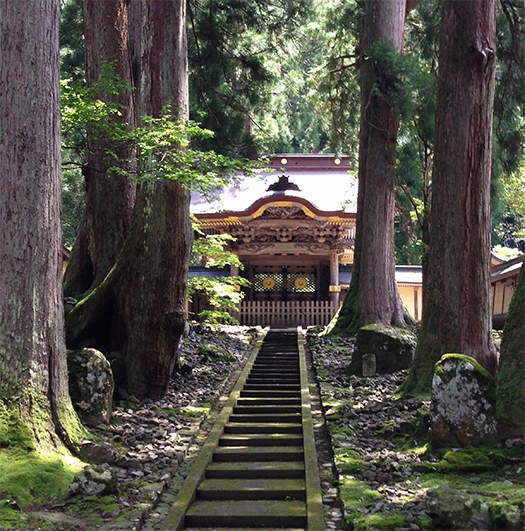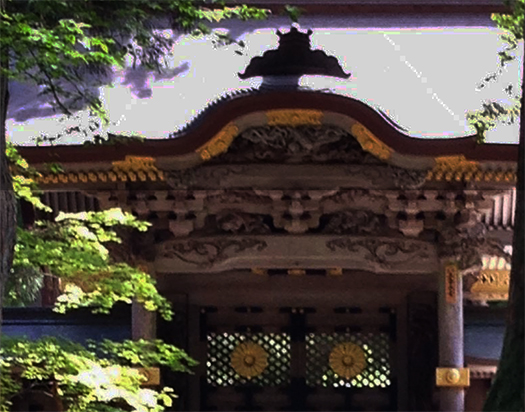


きのうは道元の学僧としての探究の志向性とその背景を考えたけれど、
福井市立郷土歴史博物館の平成19年展示企画「越前若狭の大工と絵図、道具」展の
資料をチェックしていて驚くような記述が見られた。
「中世になると県内にかかわりがある⼤⼯として永平寺の開祖道元に伴って来⽇した
宋⼤⼯・⽞源盛が知られている。後の永平寺⼤⼯の祖と伝わる⼈である。」
残念ながら企画展示は実見していないけれど、この記載は確認できた。
きのう道元23才の渡宋には建仁寺入門時の師・明全が同行したという記録を見たが、
なんと27才で帰国するに際してかの国の大工棟梁を伴っていたという記録です。
おいおい、であります。
これはとんでもない「お金持ちお坊ちゃま」の豪放なお勉強ぶり。
空海の時代の中国行きは国家事業の「遣唐使」派遣ということなので、
国費負担での修行で、大量の仏典入手費用も必要経費で渡されてもいたと思える。
なかでも最澄はいわば高級官僚としての派遣だったけれど空海は「留学生」。
私的な身分での参加だったとされた。大いに格差があったと言われる。
一方、この鎌倉期の渡航はたぶん私的な留学だったと想像していた。
であるのに、師匠を同行させた上に帰国に際して建築技術者まで連れ帰っている。
・・・地獄の沙汰も、はたまた仏教宗派開山も、◎次第なのか。
教科書的には仏教史はまるで真空世界、美しき観念世界のように書かれるけれど、
そんなことはあり得ず、俗世のしがらみ・不平等は明確に存在している。
ほぼすべての庶民が毎日食べることに必死だった時代に
宗教世界を「探究」できる人間とは、超・恵まれた特権階級出身者だっただろう。
そういった特権階級者が食うや食わずの衆生を「救済」していたワケだ。
やはり公家の源家名門出身というのが道元の素性であり
ほかの文化領域と似た貴族のサロン趣味の強い仏教探究かとも思える。
また遣唐使の時代に比較して航海の安全性は相当高まったことも窺われる。
日本に帰って禅の修行道場を開くために建築技術者まで確保した。
建築は欠かすことの出来ない宗教の重大要素でもあったことは明瞭。
いまに残る永平寺の伽藍建築は繰り返された火災で江戸期もしくは明治以降のものと
言われているけれど、その基本的なスタイルやデザインコードではこうした
開山期の時代のものが受け継がれてきたものだと想像できる。
この「宋⼤⼯・⽞源盛」さんがこの越前の地で寺院建築に携わり
その仕事工程のなかから、地場の作り手を育成して「大久保棟梁家」という
越前宮大工の中軸的作り手集団に技術伝承していったのだろうか。
いくつかの文献で永平寺門前の「大工町」という表現があり、また棟木墨書でも
棟梁大久保某という表記がある。この一族と宋⼤⼯・⽞源盛は繋がるのか
今後とも時間を掛けて探究したいと思います。
わが家では北海道の寺院由来の「頬杖」木工芸を使わせていただいていますが、
北陸富山からの工芸品といわれ、北海道の寺院建築の作り手はこの地域からの
「出稼ぎ」の人々が北前船交易でやってきていたとされる。
はるかなものづくりのルーツ、列島史が垣間見えても来ますね。
写真は永平寺の「勅使門」と言われる「唐門」の建築表現の様子です。
宋⼤⼯・⽞源盛さんのデザインコードが反映されたものかどうか。
English version⬇
[Dogen returns to Japan with a Song palace carpenter, Eiheiji-3]
Yesterday I thought about Dogen’s quest as a scholar and his background.
Fukui City History Museum’s 2007 exhibition project “Carpenters, Drawings and Tools in Echizen Wakasa” Exhibition
I checked the material and found a surprising description.
“In the Middle Ages, I came to Japan with the founder Dogen of Eiheiji Temple as a person who has something to do with the prefecture.
Song dynasty and Hogenmori are known. He is a person who is said to be the ancestor of the later Eiheiji University. ”
Unfortunately, I haven’t actually seen the exhibition, but I was able to confirm this description.
Yesterday, I saw a record that Myozen, a teacher at the beginning of Kenninji Temple, accompanied Dogen’s 23-year-old Watanabe.
It is a record that he was accompanied by a carpenter in some country when he returned to Japan at the age of 27.
Hey, it is.
This is a ridiculous “rich boy” studying for the first time.
In the Kukai era, going to China is a national project dispatched to China.
It seems that the training was carried out at the expense of the national government, and a large amount of Buddhist scripture acquisition costs were also handed over as necessary expenses.
Among them, Saicho was dispatched as a high-ranking bureaucrat, but Kukai is an “international student.”
He was allegedly a private participant. It is said that there was a great disparity.
On the other hand, I imagined that this trip to Kamakura was probably a private study abroad program.
However, he accompanied his master and brought him back to the construction engineer when he returned to Japan.
… Is it up to ◎ whether it’s hell or the opening of a Buddhist denomination?
In textbooks, the history of Buddhism is written like a vacuum world, a beautiful idea world,
That is not possible, and secular shackles and inequality are clearly present.
In an era when almost all the common people were desperate to eat every day
The person who could “explore” the religious world would have been from a super-blessed privileged class.
It is the reason why such privileged people were “rescuing” the sentient beings who did not eat.
Dogen’s identity is that he is from the prestigious Minamoto clan of the Kuge.
It seems to be a Buddhist quest with a strong aristocratic salon taste similar to other cultural areas.
It can also be seen that the safety of the voyage has improved considerably compared to the time of the envoy to Tang.
I even secured a construction engineer to return to Japan and open a Zen training dojo.
It is clear that architecture was also an indispensable element of religion.
The remaining Eiheiji temple architecture is said to have been from the Edo period or the Meiji period due to repeated fires.
It’s been said, but in its basic style and design code, it’s like this
It can be imagined that the ones from the Kaisan period have been inherited.
This “Song dynasty, Genmori” is involved in temple construction in this Echizen area.
From his work process, he trained local creators and called him “Okubo ridger family”.
Did he hand down the technique to the core group of Echizen shrine carpenters?
There is an expression “carpenter town” in front of the Eiheiji gate in some documents, and also in the purlin ink book.
Master: You can see the notation Okubo. Is this clan really connected to Song dynasty and Hogenmori?
I would like to continue exploring over time.
At my home, I use the “cheek cane” wood craft when dismantling a temple in Hokkaido.
It is said to be a craft from Hokuriku Toyama, and the creators of temple architecture in Hokkaido are from this area.
It is said that “migrant” people came by the Kitamaebune trade.
Even if you get a glimpse of the history of the archipelago, the roots of far-reaching manufacturing, you can come.
The photo shows the architectural expression of “Karamon”, which is said to be the “Temple Gate” of Eiheiji Temple.
Whether the design code of Mr. Song Oo and Mr. Genmori is reflected.
Posted on 11月 30th, 2021 by 三木 奎吾
Filed under: 住宅マーケティング, 住宅取材&ウラ話, 日本社会・文化研究







コメントを投稿
「※誹謗中傷や、悪意のある書き込み、営利目的などのコメントを防ぐために、投稿された全てのコメントは一時的に保留されますのでご了承ください。」
You must be logged in to post a comment.